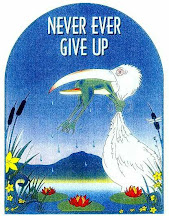I mentioned I would embellish about the young boys beside our boat.
 These youngsters, and there were many such young boys, had small boats that
These youngsters, and there were many such young boys, had small boats that
were not the best made. There were usually two in each tiny boat; the second one
would continually bail out the excess water. The endearing quality was their
singing. As they attached themselves to the side of the boat, angel like voices sang:
“Row, row your Boat…” …IN PERFECT English.
 Also on this [and the post sited above] please note the lovely CLEAR waters of the
Also on this [and the post sited above] please note the lovely CLEAR waters of the
Nile and most important the Bulrushes’.
 Papyrus, or bullrush, (Cyperus papyrus) is a member of the nutsedge family.
Papyrus, or bullrush, (Cyperus papyrus) is a member of the nutsedge family.
It’s an aquatic plant that grows along slow-moving streams like the Nile
throughout north and central Africa.
Plants grow 4-8 feet tall and have dense clumps of thumb-sized stems emerging
from a below-ground clump of rhizomes.
The above-ground stems are crowned with an umbrella-shaped inflorescence
consisting of up to 100 cylindrical rays that, while technically part of the flower,
perform most of the photosynthesis for the plant.
The flowers are not ornamental in the classic way, but the plant is very graceful
and is commonly used as a tender plant in water gardens.
To the ancient Egyptians, papyrus served the same purpose as pine pulpwood
does today.
It provided paper.
The first papyrus scrolls appear to have been made in the late Old Kingdom about
2500 to 2200 BC.
The spells and incantations depicted in the Book of the Dead scrolls were copied
from the hieroglyphic symbols carved on the tomb walls of rulers during this
period.
The scrolls on display in Memphis are from the New Kingdom (1550-1070 BC)
and beautifully depict the passage of the soul from a mortal life to the eternal
afterlife.
http://www.arhomeandgarden.org/plantoftheweek/articles/papyrus_bullrush.htm
To think as we touched these plants the actual realization of the stories of Moses
had a closer meaning.
 We hear about Jocheved and her daughter Miriam, and son Aaron.
We hear about Jocheved and her daughter Miriam, and son Aaron.
However, Pharoah has decreed that all new-born male Hebrews are to be killed by
throwing them into the river Nile, so Jocheved's new-born baby, Moses is in great
danger.
In desperation, she hides him in a basket in the bullrushes of the Nile, with
Miriam keeping watch.
Baby Moses is found by Pharoah's daughter, who takes pity on him, and takes him
back to the palace to live.
Miriam offers the services of Jocheved to the princess as a wet-nurse, and Moses is
saved.






3 comments:
Your trip and report of it have been amazing. I am so happy for you all for your comment on my blog today. I hope everything goes well. God Bless.
Another great post with great information.. and part of a very good story that I know well..
What a great adventure. I have a plant called Moses in the Rushes. But, it doesn't look anything like the bulrushes.
Post a Comment